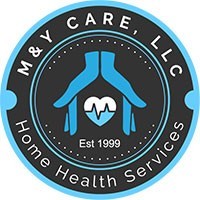After an immense disruption from the COVID-19 virus led to a dip in patient visits and revenue, home-based care insiders are now reporting budding signs of normalcy.
The public health crisis, of course, is far from over. But the initial panic is subsiding, patients are receiving care again and providers are gaining confidence operating in a coronavirus-dominated environment.
“Generally, I think things have started to [become] a little bit more normalized, if you can use that word in this environment,” Darby Anderson, a vice chairman for the Partnership for Medicaid Home-Based Care (PMHC), said on a recent webinar hosted by Home Health Care News.
This sentiment is beginning to take hold across the in-home care arena. Pennant Group Inc. (Nasdaq: PNTG) leadership, for instance, reported significant March and April troubles during the company’s Q1 earnings call, but shared May was offering reasons to be optimistic.
“So far in May, we are seeing signs of improvement in our home health census stabilization,” Pennant President and CEO Danny Walker said on the call.
While home-based care has viewed itself as a critical part of the COVID-19 solution from the outset of the outbreak, its role is about to change, according to Anderson, who also serves as the chief strategy officer at Addus HomeCare Corporation (Nasdaq: ADUS).
“Home care [has served] as a rear front in the war on COVID-19,” he said. “And I think that’s really an apt description of where we’ve been at — keeping people at home, keeping people out of institutions … and limiting the exposure of very vulnerable patients from contracting the virus. I think that rear-front position is about to shift, though. And I think it’s going to shift toward getting people out of the hospital, getting people cared for at home and providing that activities-of-daily-living (ADL) support, which is going to be critical in keeping them at home.”
Home-based care providers experienced a drop in visit volume once a public health emergency was declared, mostly for two reasons: patient fear of outside infection and elective surgeries being put on hold.
Nearly 80% of all home-based care agencies have experienced a decrease in admissions, with a majority of agencies reporting reductions greater than 15%, according to a recent survey from the National Association for Home Care & Hospice (NAHC).
In the interim, that has triggered more low-utilization payment adjustments (LUPAs) for home health agencies. Both home care and home health providers have had to operate through restricted cash flow.
Now, as older adults’ fear of infection wanes — or at least the need for care overrides it — an uptick in visits is likely on the horizon. A return of elective procedures will also return a sense of normalcy.
“We’ve been very fortunate as an industry to be in the place we are in,” Peter Ross, the CEO of Senior Helpers, also said on the webinar. “The focus was trying to keep people cared for at home before the virus, and I think the virus has even added more emphasis to that going forward. I always thought home care was recession-adverse, and I think we’re finding that home care is also somewhat virus-adverse — but not without changes.”
The search for positivity
Personal protective equipment (PPE) took center stage in a lot of the initial conversation involving the COVID-19 response.
But after spending two and a half months in “PPE anonymous,” Ross joked, providers are beginning to figure out the quirks of the procurement process.
“I think it will [continue to] get better over time,” Ross said. “I think it’s starting to settle in.”
Senior Helpers has the advantage of being a larger organization, which allows it to coordinate mass buys. For smaller agencies looking for PPE, that road has been tougher, but made easier with the help of home-based care associations across the U.S.
“I give kudos to a number of the state associations for home care and home health services across the country for stepping up and getting coordinated buys to make sure that those smaller members were able to get in the game for PPE,” Anderson said.
Stringent PPE requirements are one thing that both Ross and Anderson believe will be here for the long haul, even after a COVID-19 vaccine is widespread. Having those resources to keep staff safe will go a long way for recruiting purposes.
And despite the additional risks that now come with working on the front lines of health care, an uncertain labor market has meant more people are applying to home-based care jobs than less, Anderson said.
“Surprisingly, I’m hearing that we’re seeing people come in and apply for jobs,” Anderson said. “It’s too early to tell if it is workers who have been displaced in other industries or [what]. But I honestly would have thought that there’d be no new recruitment going on, and that’s not at all what I’m hearing.”
According to the U.S. Department of Labor (DOL), more than 30 million unemployment claims have been made since the first week of March.
The face-to-face requirements that usually coincide with the hiring process have been relaxed by the Centers for Medicare & Medicaid Services (CMS). That has also helped facilitatie new hires during the COVID-19 crisis.
That governmental attention being paid to home care, in general, has been a welcomed development.
“Even at the congressional level, there’s been a number of proposals that have contemplated, ‘What about home- and community-based care? What about home care services?’” Anderson said. “We’re normally [not included] in a lot of that discussion in the bigger health care picture. So, maybe this crisis has developed into an opportunity to really educate people on what the services that we’re providing are — and how they can be better coordinated [moving forward].”
By Andrew Donlan | May 17, 2020
Source: Home Health Care News

